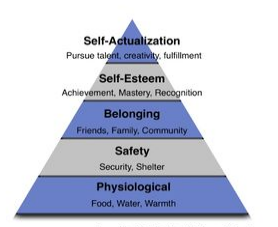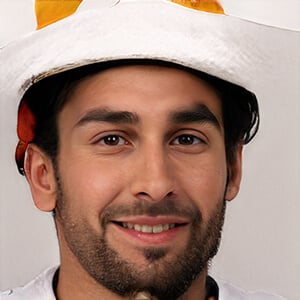Introduction
Organization behavior (OB) is the conceptual study of human behavior in an organization. Employees are the assets of the company it is essential that they like the workplace and be loyal towards the firm. OB supports the entities in identifying their attitude towards the brand and helps to make them positive towards the corporation (T’ng, Baharudin and Ismail, 2015). This study is applied in order to improve performance of the workers so that they contribute well in the organization and supports the firm in accomplishing their goals and objectives. The present report is based on the City college and Enterprise-Rent-a-car. Assignment will focus on the organizational structure and culture of the cited firms. Various factors that influence individual behavior will be discussed in this study. Leadership styles adopted by both firm and their impact on the organization will be described in this report (Akowe, 2016). Comparison of different motivational theories and their usefulness for the entities will be discussed in this assignment. Various components that may promote the development of effective team will be illustrated in the present study.
Task 1
1.1 Compare and Contrast of Structure and Culture of Organization
The performance of an entity much more depends upon its structure and culture. Organizational structure can be described as working pattern of a corporation, hierarchical arrangement of authorities and how communication takes place in an entity. That is completely based on the goal and objective of the firms. City college and Enterprise both follow different organizational structures (Ghadimi, Nega and Nikraz, 2015). There comparison is as following:;
|
Enterprise-Rent-a-Car |
City College |
|
It follows the centralized structure. |
It follows decentralized structure |
|
Meaning: It is followed by the large firms which are working worldwide in different geographical areas. In such type of structure higher authorities retain all powers to take any decision. |
Meaning: In such type of structure decision making power are distributed and various management level persons are accountable for the judgment. |
|
In such type of structure, communication flow is vertical. As in the Enterprise higher authorities do not coordinate with the lower staff directly, they inform department head and so on information pass to next level employee (Shallice, 2014). |
In the City college open and free communication held between employees and employer. |
|
Inadequate control over the staff members is done in the workplace. |
Considerable control over the employees. |
|
Strong supervision of managers is here. |
In this people are skill so managers have nurturing nature towards their workers. |
|
It is necessary to follow the rules and regulations in the cited firm. |
Flexibility is provided by the authorities to their employees so that they like workplace and perform better. |
Culture
The culture of an organization can be described as values, believes and ethics of the firm. Health culture in the workplace help in creating positive workplace where people can feel satisfy. Handy has described the four types of culture; power, role, personal and task culture. College have power culture in which every one gets learning opportunity (Lambert and Blackmore, 2015). All perform their duties individually and fulfill their responsibilities well so that goal of the company can be accomplished. Flexibility in the workplace encourages others and they share their innovative views through which teachers can deliver good knowledge to the students. Enterprise is the big organization and operating in many geographical areas. It is very important for the cited firm to manage their employees well and make effective coordination among them so that conflicts can be minimized to great extent. Entity follows role culture in which all persons have to perform their duties. Managers give them responsibility as per their capability and position in the company (Wilson, 2016). Role culture helps in reducing confusion in the workplace and performance of workers. By this way firm will be able to achieve its goal significantly.
1.2 Correlation Between Structure and Culture
Organizational structure and culture are interrelated aspects and impact on each other to great extent. If structure of the company is poor then culture would not be able to create healthy working environment. By this way people will be demotivated and they will not like the workplace (Martínez, Suárez and Ghezzi, 2016). By this way job turn over will get increased that can harm the reputation of the firm. Positive culture and ethical values will encourage employees and they will accept inflexible structure and will put their best efforts in the organization so that objective of the entity can be fulfilled. If structure is improper then people will not look upon the cultural aspect, same as if culture is poor then employees will ignore the structure.
Development of culture is highly depended upon the policies and procedure which are made through structure of the company. So both are deeply connected terms and impact on each other (Aparow and et.al, 2014).
As City College follows decentralized structure and power culture. That supports the cited firm in achieving its goal. Flexible environment motivates teachers and they try to deliver good knowledge to students. Apart from this due to positive culture and lack of supervision confidence of the workers get improved. By this way people perform their duties well and support higher authorities. Whereas Enterprise is the global brand, it follows centralized structure and role culture. That helps in taking speedy decisions and give rewards to the workers. That motivates the staff members and people stay in the firm for longer period. That impact positively on the cited firm and helps in accomplishing goal of the entity (Yeasmin, Jinnah and Islam, 2014).
1.3 Factors that Influence Individual Behavior
Personality Factor: Age, gender etc. are main elements those influence the behavior of person in the organization. Young people are much more enthusiastic and innovative they use innovative ideas to perform the task better. Whereas old people wants to perform their duties with the traditional methods (BENHATTAB, 2013). So if Enterprise or City college modify their working practices then below 30 persons will take it as challenge but old people will be negative and they will change their mind towards the firm. So it can influence their behavior to great extent.
Culture: Every person has different values and ethics. If there are cultural differences then individual will not be comfortable in the workplace and will prefer the leave the job. Whereas f there are same culture then individual will be positive and will stay in the organization form longer period (Ranta, 2014).
Environmental Factor: If in the City college and Enterprise, employees do not get promotional opportunity and manager create negative pressure on them. Then in such condition behavior of individual can be influenced to great extent. No one will be able to stay in the firm for longer period whereas if company provides them equal opportunities and promotion options then they will be motivated and perform their duties well (Hu, 2013).
Working Practices and Relationship: It is another factor that influence the mind of individual. As City college has flexible working policies and practices so people are positive and they have good communication so bonding of them are very strong. Whereas Enterprise has strict rules and regulation and due to this working performances of the employees is increasing. Reward system encourages them to do well for the firm (Håkansson, Kvarnström. and Nilsson, 2014). By this way people trust on the employer and perform their responsibilities well. But if they pressurize the persons and demotivate them then in such condition people will be negative and they will not like the workplace.
Task 2
2.1 Effectiveness of Different Leadership Styles
Leaders are the key players of an organization, they motivate employees and guide them in such manner so that they can improve their performance. Leadership is the skill of a leader which supports entity in increasing profitability (Sönmez, 2014). There are different leadership styles adopt by the managers of both companies:
Autocratic Leadership:
It is the type of leadership in which leaders have controlling nature and they take all decisions by own. Enterprise adopts this leadership style, for the firm it is necessary that people follow rules and regulations and obey guidelines of managers (Carter and. et. al, 2013). By this way conflicts will be minimized and that will help in improving performance level of staff members. Effectiveness of autocratic leadership are as below maintained:
As higher authorities take the final decision so fast and good decisions taken by managers for the welfare of the company.
Leaders supervise people closely so they improve their learning and knowledge, by this way overall performance of workers get enhanced.
To motivate staff members, leaders give them rewards and recognition. By this way people like the workplace and job turn over get reduced (Wilson, 2015).
Democratic Leadership:
It is adopted by the City college in its workplace. In this, leaders provides flexibility to employees and involve them in decision making process. By this way people feel involved and share their innovative views with management. By this way managers can make effective strategies for the well fare of cited firm. Effectiveness of democratic leadership are as discussed below:
As all workers are involve in decision making process so satisfaction level of them get increased (Autocratic leadership style. 2015).
Communication between employees get improved and that is why conflicts and misunderstanding get reduced to great extent.
Free-rein leadership:
It is the type of leadership in which higher authorities trust on their staff members and provide them freedom to work as per their own ways. It helps in increasing morale of staff members. Job satisfaction get increased and people serve better to consumers. That supports in increasing profitability of the company (Ranta, 2014).
2.2 Organizational Theory and its Link with Management Styles
Organizational theory is the study of the structures of organizations, and to understand their nature and behavior. To achieve goal and objective of the company it is very important to understand and implements effective theory in the organization. Management style is simply construed as a way to manage an organization.
The relationship between management styles and organizational effectiveness cannot be overemphasized (Martínez, Suárez and Ghezzi, 2016). Management styles are one of the important factors that affect organizational effectiveness. A good match between the style of management and operating realities of an organization will substantially influence its level of effectiveness (Wilson, 2016). In each organization, management style influences the performance of individual employee and work groups, and thereby the whole organization’s performance.
There are various organizational theories:
Classical Theory: It represents the merger of scientific management, bureaucratic theory and administrative theory
Scientific management theory has four basic principles:
- Find the one "best way" to perform each task
- Carefully match each worker to each task
- Closely supervise workers, and use reward and punishment as motivators
- The task of management is planning and control
It was very successful at improving production, but it has not faired well in modern companies. The philosophy of "production first, people second" has left a legacy of declining production and quality, dissatisfaction with work, loss of pride in workmanship, and a near complete loss of organizational pride (Ranta, 2014).
Max Weber (1947) expanded on this theory called bureaucratic theory, emphasized the need for a hierarchical structure of power. It recognized the importance of division of labor and specialization. A formal set of rules was bound into the hierarchy structure to insure stability and uniformity
Administrative Theory: The emphasis was on establishing a universal set of management principles that could be applied to all organizations
Human Relations Theory: It is also called Neoclassical theory addressed many of the problems inherent in classical theory which focuses on employee's needs
Principles of Human Relations Theory are :
a) emphasizing differences between people to create different effective motivators and resolving creative conflict to develop new ideas and build stronger working relationships.
b) emphasizing social interactions, participative management and decision-making.
Decision Theory: It is also called Contingency theory for inescapable, but manageable work of an organization, assesses management effectiveness by management’s environmental adaption abilities.
theorists noted the importance of giving managers at all levels the authority to make decisions over their domain. Managers would be free to make decisions contingent on the current situation
Modern Systems Theory: The principles of Modern systems Theory are: a) All of an organization's components interrelate non linearly, therefore making a small change in one variable impact many others. A small change can cause a huge impact on another variable or large changes in a variable can cause a nominal impact
2.3 Different Approaches of Management
There are several approaches to management that is being used by different organization such as Passive, steering, capacity building approach etc (Ranta, 2014).
According to the case study, Enterprise wants to enhance its sales and want to satisfy its users. So for achieving this objective cited firm follows capacity building approach and train its staff members in such manner so that they can build relationship with the users. It will help in increasing their skills and they will serve better services to clients. With the help of capacity building approach Enterprise will be able to motivate its staff members thus, people will like their working place and they will contribute well in the success of the organization.
On other hand City college is working in the educational field and it is necessary for the entity to provide good knowledge to students so that they like their college. Cited firm follows Steering approach in the workplace with the help of this students can lean many things. Apart from this teachers and other staff members feel satisfy and they perform their work well effectively (Sönmez, 2014). Less supervision and less controlling encourage them to perform better. Apart from this, they share innovative ideas through which they can per duties well.
Task 3 Understand Ways Of Using Motivational Theories In Organisations
3.1 Impact of Leadership Styles on Organizations
Leaders are the key players of an organization, they guide people and motivate them so that employees can perform their duties well. Leaders are responsible for the growth of an entity, they put their best efforts in achieving the goal of the firm. There are different types of leadership styles adopt by different organization. All these styles directly or indirectly affect the business performances. In the City college leaders and management level persons follow democratic leadership style. In this they involve all employees in decision making process and take time to time their feedback (Autocratic leadership style. 2015). So that draw back of current system can be find out and firm can make strategies to deal with such issues. Impact of democratic leadership on City college are as following:
- Flexibility and less supervision motivate employees and make them loyal towards brand.
- People share their views and innovation takes place.
- Job turnover is very less in the City college due to democratic leadership. As each individual has right to make their own judgment (Wilson, 2015).
On other hand it impacts negative also, extra freedom make them careless and they avoid their duties. And due to this people can not manage work load and create negative working environment.
Enterprise adopts autocratic leadership in which leaders of cited firm do not get power to make their decision. Impact of autocratic leadership on Enterprise:
People follow rules and regulation and by this way their working performance get improved.
Reward system highly motivate the workers and encourage them to stay in the organization for longer period (Wilson, 2015).
With the help of this leadership, leaders develop professionalism among employees.
On other hand high controlling and strict regulations demotivate them and they prefer to leave the job.
3.2 Different Motivational Theories
Motivation is the key factor that increase performance of the organization to great extent. Every corporation know the importance of motivation in the workplace because motivated staff members are loyal and they put their best efforts for the well fare of the company (Martínez, Suárez and Ghezzi, 2016).
Theory X and Y
Theory X assumes that employees are not satisfy with the working environment and they are demotivated. So in such condition it becomes duty of management level persons that to encourage the people so that they can perform better. Managers have to give close supervision and have to give monitory rewards so that workers can be positive towards the brand. Theory Y explains that people are satisfied with their jobs and they are performing well. Management needs not to do anything to motivate them. But managers of the company can give reward and recognition in order to promote them towards higher level (Wilson, 2016).
This is great concept and give benefit to City college and Enterprise. With the help of this motivational theory both entities will be able to motivate its staff members. By this way job turnover rate of the company will get reduced and skilled persons will stay in the organization for longer period (Wilson, 2015).
Maslow's Motivational Theory
Customers and employees both are important for the growth of the firms. If consumers are satisfy then they will buy the products again and again whereas if employees are happy then they will provide quality services to the clients. In both cases organization will be able to enhance its profitability and sustainability (Hu, 2013). Maslow concept is based on the need identification. This theory explains that there are five types of needs of employees psychological, safety, social, esteem and self actualization. By fulfilling on requirements of the workers City college and Enterprise both will be able to motivate its staff members. By this way, people will feel happy and they will put their best efforts for the well fare of the companies.

3.3 Usefulness of Motivational Theory
In the modern era, it is very difficult to survive in the corporate world. Firms have to provide excellent services to consumers so that they get attracted towards the brand and be loyal towards the company. It is possible if workers treat all consumers well and provide them goods as per their needs. Motivational theories are very useful, it can help in satisfying their workers by this way City college and Enterprise will be able to understand needs of its users.
City college follows Maslow's motivational concept and identify the learning needs of students. So that it can train its staff members in such manner so that they can provide good knowledge to the learners. Apart from this, company look upon other departments as well and give them rewards and recognition (Wolfram and Gratton, 2014). So that all workers can perform their duties well and contribute well in the economic development of organization. Love, respect can make people loyal and their retain in the firm can get enhanced.
Enterprise managers follow the X and Y theories in the workplace. They first identify the group those who are happy and second which are demotivated. Managers treat both of them differently. Company provide monitory rewards to unhappy employees so that they feel satisfy whereas it give recognition in front of all staff members to the happy persons. By this way employees feel satisfied and talent stay in the workplace for longer period (Lambert and Blackmore, 2015).
Task 4 Understand Mechanism For Developing Effective Teamwork In Organisations
4.1 Nature of groups in organizations
There are number of employees those who significantly for the welfare of the corporation. Generally they are divided into two groups formal and informal. Formal group is the type of unity in which all members behave professional and they work according to the norms of the firm. Informal group is the type of unity in which people has friendly relationship and they share their feelings with each effectively. In the City college there's formal group present. All department's employees have professional relationship with each other. They coordinate well with each other but do not share their feelings. All staff members follow instruction of higher authorities and manage their work accordingly (Lambert and Blackmore, 2015).
On other hand Enterprise has informal and formal group both. Nature of informal group is very friendly, they share views with each others and discuss the issues openly. They have strong relationship with each other and that is why communication takes place between them significantly (Ranta, 2014). Due to the strong bonding conflicts get reduced in the workplace to great extent. That helps to encourage people to improve their performance and put best efforts for the benefit of company. But some times these informal group members discuss personal issues which are not related to official work that create negativity in the workplace. They ignore guidelines of the higher authorities and spoil environment of the company.
4.2 Factors that Promote Effective Team Development
There are many elements that promote or inhibit development of an effective team. These are as following discussed:
Team size: It is an important factor due to this team performance can get affected to great extent. If there are high number of workers in a single team then it becomes difficult for the managers to manage them. That affects on their working performance and create misunderstanding between employees. On other hand if there are limited team size then no confusion will take place in City college and Enterprise (Martínez, Suárez and Ghezzi, 2016).
Social Cohesiveness: It is one of the common factor due to this job turnover is increasing. There are many persons those who are negative and their negative conversations create negative environment. It demotivate workers of City college and Enterprise and they feel unable to stay in a team or work as a team.
Good Organization: It is essential factor that helps in promoting team development to great extent. If company is providing positive workplace environment to its team members and culture of the firm is good then it will help in motivating team members and they will put their best efforts for the well fair of the entity (Martínez, Suárez and Ghezzi, 2016).
Good Communication: It is another factor that helps in the promotion of team development. If people interact with each other well then there will be no confusion regarding duties and role. But if there is coordination problem due to language issue or culture then team members will not be able to understand each other. It may turn into big conflict situation in the workplace (Sönmez, 2014).
Stability-reliability: It is another component that impact on the team development. If team members are not stable then they will not be able to work as team and they will not support each other. By this way both firms will not be able to accomplish a team development their tasks.
Know Your Team: If the mangers and supervisor identify needs of their employees and motivate them by fulfilling their requirements. By knowing the team well company will be able to make them satisfied. It will help in encouraging the employees to perform their duties well and contribute in achieving goal of the firm.
Tackle Problems Quickly: It is another factor that can promote team development to great extent. There are so many issues faced by the team in workplace environment and their personal life. If management of cited firm work fr resoling their problems soon then it will motivate them and they will stay in the workplace for longer duration (Martínez, Suárez and Ghezzi, 2016).
Define Roles and Responsibilities: it is one of the major factor that influence the overall working of City college and Enterprise both. Most of the people are unaware with their responsibilities By making them aware and defining their duties clearly both firms can enhance productivity and efficiency of the operation and it will support in development of team as well.
Break Down Barriers: It is another element, if management of City college and Enterprise break down the barriers that cause difficulty to the team then it will be able to motivate team and it will help in their development significantly.
Create Good Harmony: It is the element that helps in developing relationship between employees. By this way they will understand each other and will support each other well. That would create positive environment in the workplace thus confusions and conflict will get reduced soon. That will support in promoting the team development.
Pay Attention/Show interest/openness: Higher authorities needs to pay attention of team members and they have to train them and try to develop their skills. By showing their interest in the team, confidence of team members can be boost up and they will work hard for the organization (Martínez, Suárez and Ghezzi, 2016).
4.3 Impact of Technology on Team Working
In the modern era, it is essential for the entities to adopt the latest technologies. That can help in increasing sustainability of the organization in the corporate market. With the help of technologies companies not only speedy finish their task whereas the can improve the quality of work as well. Impact of technology on team working are discussed as following:
Technology helps in making good coordination in a team, by this way easy and fast interaction will take place so misunderstandings will get reduced to great extent. It impacts positive and enhance performance of a team in City college and Enterprise (Aparow and et.al, 2014).
With the help of advanced software and other tools both organizations will be able to train its staff members well. By this way, they will develop some additional skills that will help them in performing their duties well.
But technology also impact negative on the team working, as if people has no knowledge about the technique then they will not be able to operate such tools. It will demotivate them and make them negative. And if one person becomes negative then it can spoile working environment and can influence others too (Håkansson, Kvarnström. and Nilsson, 2014).
Virtual team is the group of people those who work together from different geographical locations. Technology impact on the individual person of the team because they can be able to coordinate well via email, net etc. That would develop communication and understanding level of the workers thus confusion and conflict can get reduced to great extent. It impacts on the organization as well, because virtual team will be bale to work together for accomplishing common goal thus, overall production and profitability of the entity will get raised. Employees will be able to serve better to social group or consumers. Technology will support in knowing preferences of different societal members and company will be able to offer them similar product as per their needs. Thus, it will make them positive towards the brand.
Conclusion
From the above report, it can be said that employees are the assists of the company and it is essential to treat them well. Satisfy workers can stay in the firm longer period and can contribute well in the increasing the performance of the companies. City college and Enterprise both have unique pattern of working. Centralized and decentralized structure support in accomplishing the objective of both entities. Motivation is an important aspect, by encouraging employees, managers can make them loyal and can enhance their satisfaction level. That can help in increasing retention rate and profitability of the firms.
References
- Akowe, J., 2016. Optimism, Coping Behavior and Gender as Predictors of Psychological Health of Flood Victims in Kogi State (Doctoral dissertation).
- Aparow, V. R. and et.al., 2014. Development of Antilock Braking System using Electronic Wedge Brake Model. Journal of Mechanical Engineering and Technology (JMET). 6(1). pp.37-63.
- BENHATTAB, L., 2013. Sociolinguistic variation in the speech community of Béchar (Doctoral dissertation, University of Adrar).
- Carter, M. Z. and. et. al., 2013. Transformational leadership, relationship quality, and employee performance during continuous incremental organizational change. Journal of Organizational Behavior. 34(7). pp.942-958.
- Ghadimi, B., Nega, A. and Nikraz, H., 2015. Simulation of Shakedown Behavior in Pavement's Granular Layer. International Journal of Engineering and Technology. 7(3). pp.198.
- Håkansson, N., Kvarnström, E. and Nilsson, E., 2014. Using the Package to Influence Consumers' Choice of Brand: A Study on the Effect of Package Communication Claims on Propensity to Switch Brand.
- Hu, G., 2013. Modelling travellers’ risky choice behaviour in revealed preference contexts: A comparison of EUT and non-EUT approaches.
- Lambert, K. T. A. and Blackmore, C. J., 2015. Morphological sexing of Grey-crowned Babblers Pomatostomus temporalis temporalis: near enough is not quite good enough. Corella. 39(4). pp.81.


 Company
Company













